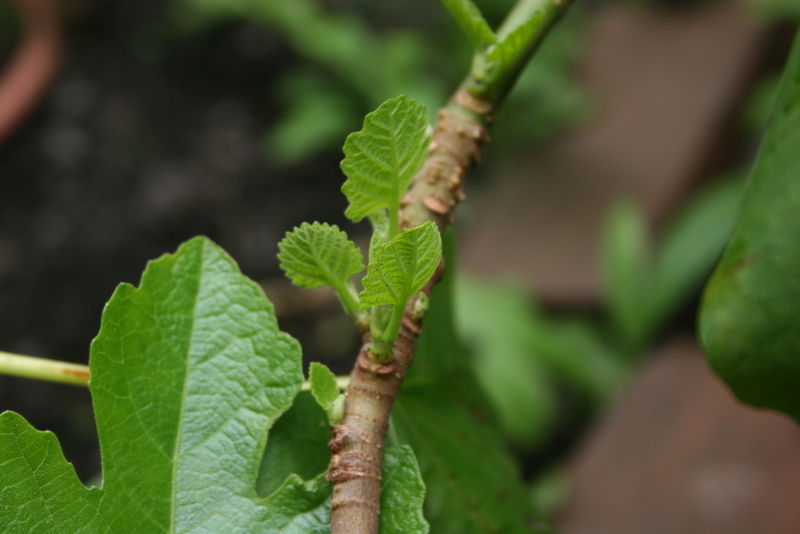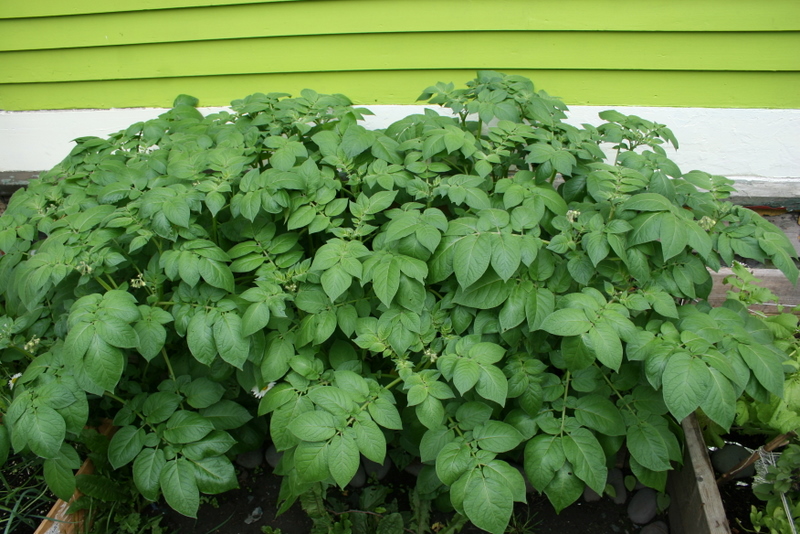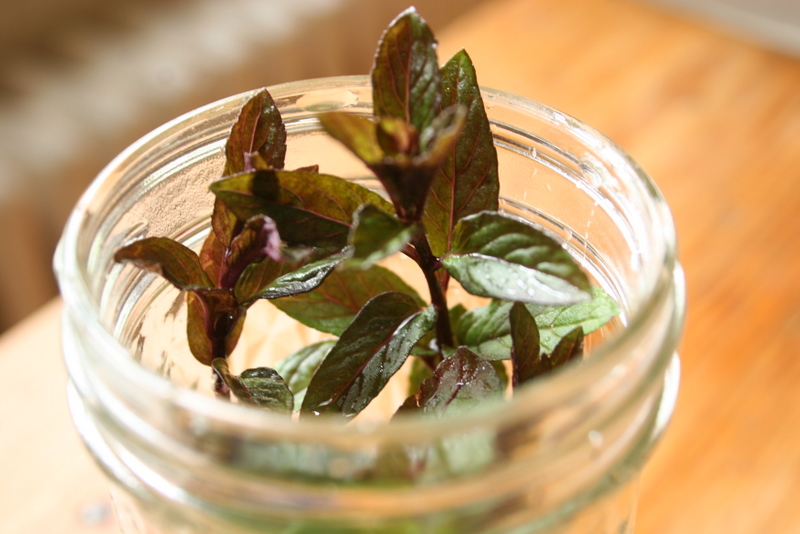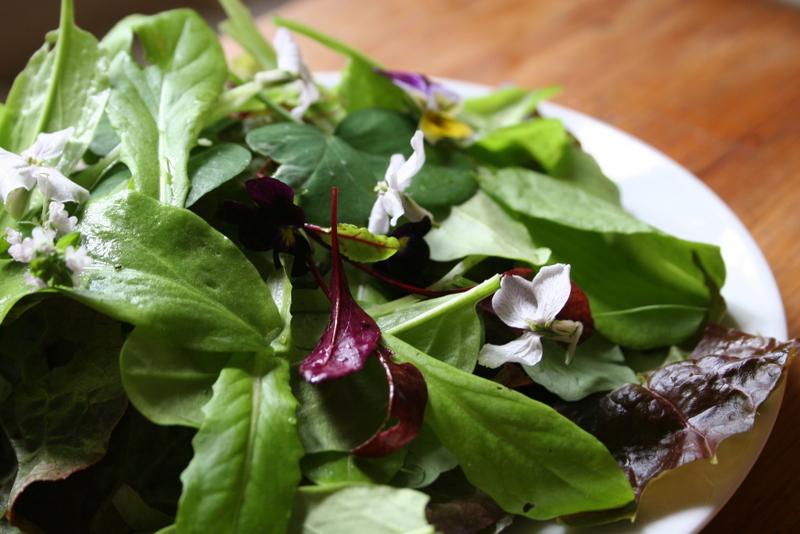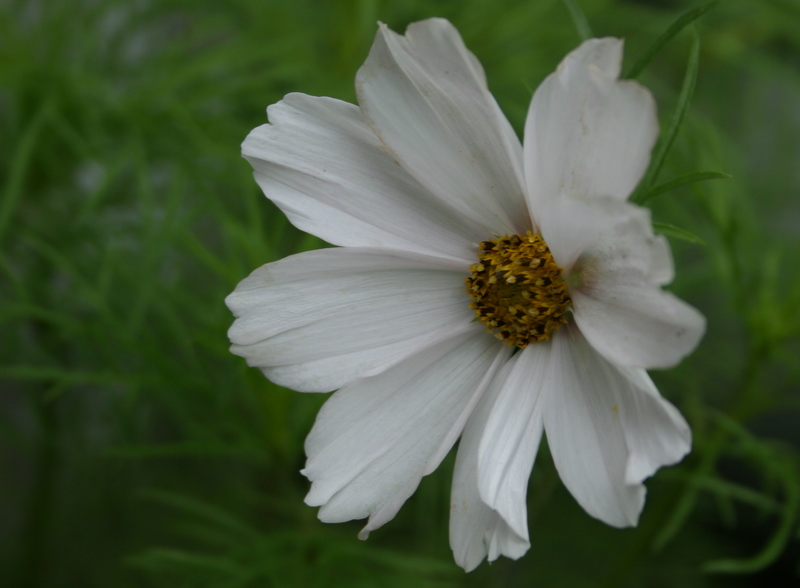 Hello, friends! I had wanted to do a lovely pictorial of all the things growing happily in my garden today, but unfortunately almost everything in the back yard is completely covered in specks of black poo from the millions of tiny worms rolled up in the leaves of my neighbours' enormously large maple tree, the branches of which now reach almost 2/3 of the way across my back yard. It's to the north of my garden, so it doesn't block all the light (although if it weren't there, I could grow super sunny crops like corn and peppers without any trouble, I'm pretty sure), but it does shower everyone and everything with worm poo for weeks of the summer, then with seeds which seem to have a 115% germination rate, and which I spend the entire warm season trying to remove. Ah, but it is a lovely tree, I suppose. A lovely, wormy, shady, seedy tree. (The neighbours, though, really are lovely, and since they're renters I do not hold the pooping monster tree against them. We're all victims here!)
Hello, friends! I had wanted to do a lovely pictorial of all the things growing happily in my garden today, but unfortunately almost everything in the back yard is completely covered in specks of black poo from the millions of tiny worms rolled up in the leaves of my neighbours' enormously large maple tree, the branches of which now reach almost 2/3 of the way across my back yard. It's to the north of my garden, so it doesn't block all the light (although if it weren't there, I could grow super sunny crops like corn and peppers without any trouble, I'm pretty sure), but it does shower everyone and everything with worm poo for weeks of the summer, then with seeds which seem to have a 115% germination rate, and which I spend the entire warm season trying to remove. Ah, but it is a lovely tree, I suppose. A lovely, wormy, shady, seedy tree. (The neighbours, though, really are lovely, and since they're renters I do not hold the pooping monster tree against them. We're all victims here!)
So yes, all my backyard plants are covered in worm poo and not looking all that pretty. They're doing reasonably well, though. My Jerusalem artichokes, which were nearly devoured by slugs, are now about two and a half feet high and have formed a thick stand behind one of my raised beds and against the neighbours' fence (directly in the line of fire of the most worm poo). When I ordered them, I knew where I wanted to put them, but I wasn't sure exactly how to execute it. I didn't want to put them straight in the ground, because they're in the sunflower family, and sunflowers suck lead out of the soil - great if you're growing ornamental sunflowers and then binning them, but not so great if you're growing them for their tasty tubers. Time was running short and I hadn't come up with a good plan, so I just flung a bag of soil on its side, cut the now-top of the plastic off, and planted them in there. They're definitely too close for comfort, and probably won't produce all that well due to cramped space, but seeing as how there's no proof that anyone but me even likes Jerusalem artichokes, I think that's alright.
Across the yard, away from the worm poo (but straight into the bindweed), my fig is putting out tons of new growth.
My fig lives in an old enamel stock pot with holes in the bottom. This year, I gave it new soil and fed it with tomato feed, which is apparently something figs like (according to someone on the web somewhere - I can't for the life of me remember). I had overwintered it indoors last year, but I think this year I'll tuck it in a protected corner of my patio and let it experience the winter. I think I've interrupted its natural cycle of dormancy by keeping it too warm, and now the poor thing is confused. If I ever want to eat a fig from my own tree, I'd best try to un-confuse it.
Right now, the most advanced crops are my tomatoes, which are all beginning to flower, and my Onaway potatoes, which are looking fantastic (and taking up half my front yard).
Their leaves are so lush and gorgeous! Since Onaways are "earlies," I can start feeling around for baby potatoes as soon as the flowers do their thing. I'm super excited, especially after last year's great potato failure. These guys don't make great storage potatoes, from what I hear, but I have Pink Fir Apple spuds growing out back for that. They went in the ground much later, so they're nowhere near as advanced, but I think they'll do alright.
Out of the crops I didn't expect to do all that well, my Aunt Molly's ground cherry seems to be coming along quite marvelously. I have one in a pot in my front yard that is going great guns, and another two in a raised bed in the back yard that are quickly catching up. I put in three more plants at my mother's house, but they're not quite so happy, for reasons we have yet to determine. I'm super excited about these. I used to eat ground cherries until I couldn't take it any more when I lived in Montreal, but they're pretty scarce around here. They really are very tasty.
So that's the good news. Sadly, it's not all looking that good. My cucumbers never came up at all. I sowed them outdoors under glass because I ran out of space under the grow lights in my basement, but nothing happened. My Gnadenfeld melon plants were eaten by slugs, and I think my Blacktail Mountain watermelon might suffer the same fate. I have plenty of seeds left of each to try again next year, but still, it's pretty disappointing. My French beans never came up at all, and I had wanted to train them up a nice, attractive teepee, with sweet peas growing up among them. Well, at least the sweet peas are growing, so the teepee won't look totally stupid.
Oh, and my brassicas at my mother's place are full of cabbage worms. We broke out the BT and are hoping for the best. Now, if only the landlords next door would come spray that tree...






